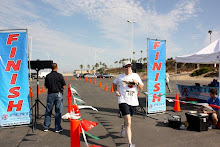---
A Tsunami Strikes San Pedro and Wilmington, August 1868
‘A Most Startling and Remarkable Tidal Phenomenon’
On August 14, 1868 a tsunami struck the harbor area. A tsunami is a series of large sea waves usually caused by a large earthquake beneath the sea floor or less frequently by an underwater landslide or volcanic eruption. For the rest of the article, click on this link and go to page 4:
| USS Wateree Beached at Arica, Chile, after she was washed ashore by a tidal wave on 8/13/1868 |
****
****
"Largest Earthquake in the World" Impacts Los Angeles Waterfront, May 1960
On May 22, 1960, a magnitude 9.5 earthquake struck south central Chile. The United States Geological Survey calls this "the largest earthquake in the world." In Chile, approximately 2,000 people were killed, 3000 injured, and another 2,000,000 were left homeless.
The Governor's Office of Emergency Services for California estimates that the waves generated by this massive earthquake caused about $500,000 to $1,000,000 worth of damage to the state, and notes that two people were killed.
Locally, the Los Angeles Times reported that boats and piers were smashed along San Pedro's waterfront, where a series of tidal currents surged back and forth surged through the port's narrow Cerritos Channel. Some 300 yachts and small boats were ripped from their slips, and early estimates were that 15-20 boats had sunk. The surge was estimated at up to 8-9 feet high in places at times. A strong current caused the port's Terminal Island ferry Islander to be swept off course by 300 yards, while "monumental traffic jams" occurred in both the Los Angeles and Long Beach harbor areas.
A Port of Los Angeles report states that the "Chilean earthquake and tsunami of May 1960 was the maximum event recorded in recent history to impact the Ports."
For more on this devastating earthquake, click on these links:
http://earthquake.usgs.gov/earthquakes/world/events/1960_05_22_articles.php
The Governor's Office of Emergency Services for California estimates that the waves generated by this massive earthquake caused about $500,000 to $1,000,000 worth of damage to the state, and notes that two people were killed.
Locally, the Los Angeles Times reported that boats and piers were smashed along San Pedro's waterfront, where a series of tidal currents surged back and forth surged through the port's narrow Cerritos Channel. Some 300 yachts and small boats were ripped from their slips, and early estimates were that 15-20 boats had sunk. The surge was estimated at up to 8-9 feet high in places at times. A strong current caused the port's Terminal Island ferry Islander to be swept off course by 300 yards, while "monumental traffic jams" occurred in both the Los Angeles and Long Beach harbor areas.
A Port of Los Angeles report states that the "Chilean earthquake and tsunami of May 1960 was the maximum event recorded in recent history to impact the Ports."
For more on this devastating earthquake, click on these links:
http://earthquake.usgs.gov/earthquakes/world/events/1960_05_22_articles.php

2 comments:
I was a kid living on the sailboat, Four winds, at Newmark's Yacht Centre at the time. I was awakened by the loud bang of a 50 gallon drum that broke lose from the dock and slammed into the stern of our boat. Going up on deck I was amazed to see the channel moving like a river first one way and then the other. Whole sections of dock with boats attached were moving back and forth in the channel. A number of large sail boats were going back and forth through the two bridges causing traffic nightmares as well. The Coast Guard frantically tried to deal with the situation.
Since the docks were coming apart, my father decided to leave the area and tie up in a cul-de-sac where large ships berthed. On the way, we saw the Terminal Island ferry trying to cross the channel, but going sideways.
We decided to go to Catalina Island for the weekend since the harbor was such a mess. On the way a small power boat came roaring by oblivious to the dangers of debris in the water. Sure enough, they hit a partially submerged piling. Fortunately for them, there was a Coast Guard ship nearby, but by the time we towed them over to it, their decks were awash. We left them with the Coast Guard who began pumping immediately.
We were fortunate to be able to dock across the harbor at Henry's Marina which hadn't suffered much, if any damage.
All in all, it was quite an event for which we had absolutely no warning. We were lucky to come out unscathed and fortunate that my father was a savvy seaman.
I was stationed aboard the Coast Guard cutter 95305(later called point Higgin) on 5/22/60. We were moored on outside of the Coast Guard bass in LA harbor. We went on deck to see slips containing multiple numbers of boats moving at a good rate of speed, first in one direction and then reversing direction. It was a disaster. We got underway to effect rescue but no sooner secured a runaway boat than the current would reverse and tear it away from us. Not to mention the difficulty maneuvering in the rapidly changing tide direction. I don’t remember much more as it has been almost 60 yrears ago
Post a Comment